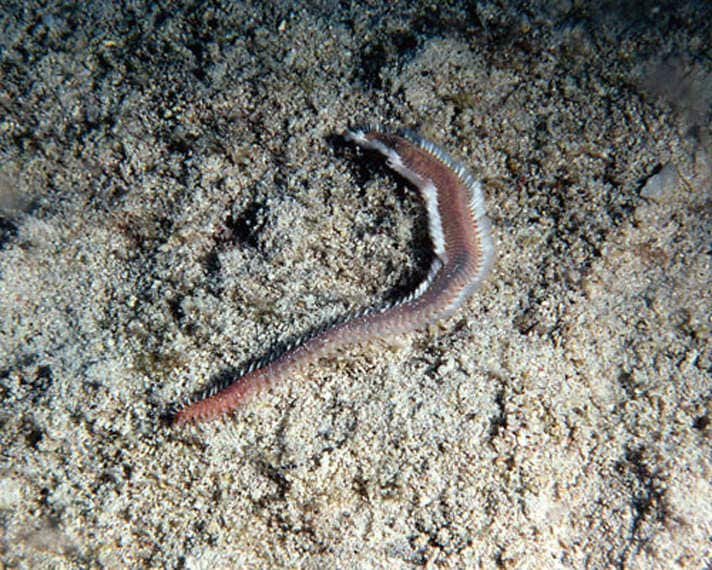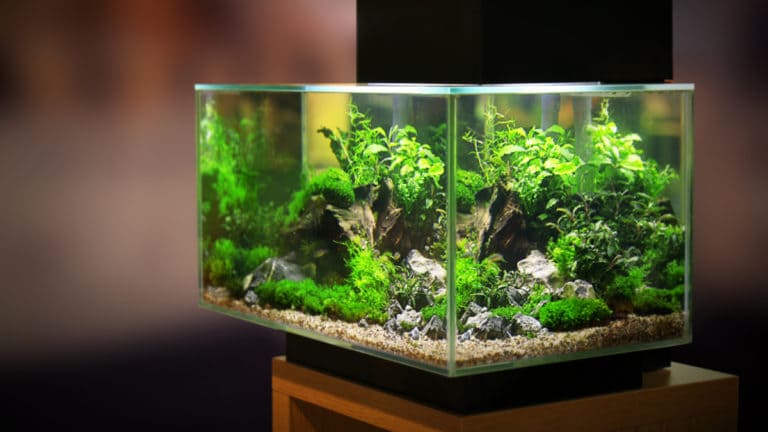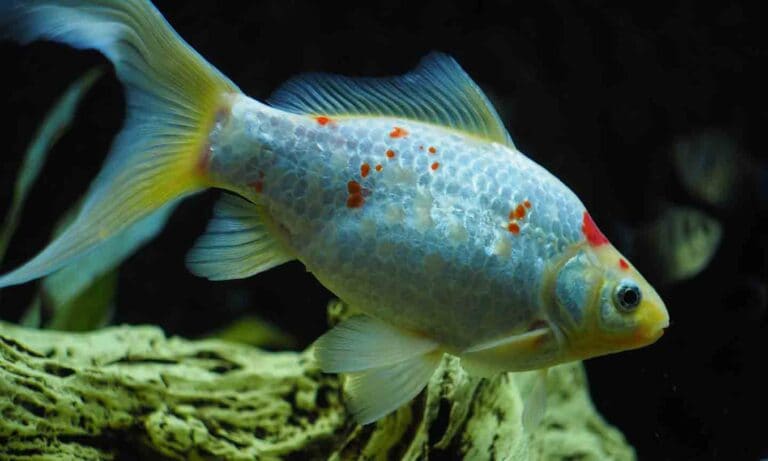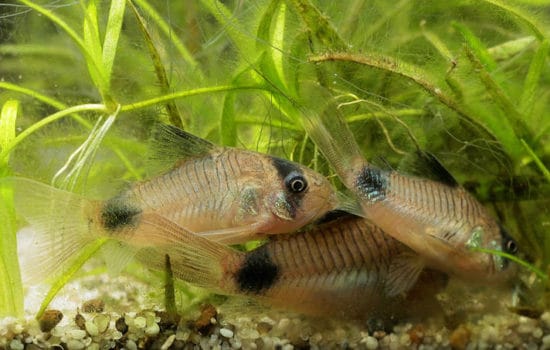Ecology is the science of how organisms interact with each other and their environment. All of this — animals, plants, environment — is known as an ecosystem. As aquarists have become better able to maintain more animals of various types, we have left the simple “fish tank” concept behind. Although we don’t often tend to think of our aquariums in such terms, a successful coral reef aquarium is a fully functional ecosystem. It’s not a natural system by any means, but it is a rather good copy of a simplified reef habitat. As such, a reef aquarium includes producers (algae, plants, cyanobacteria), consumers (fish, corals, worms, clams), decomposers (bacteria, fungi) and scavengers (organisms of several types that break down and utilize food as an intermediate between consumers and decomposers).
Many of these scavengers are also the natural prey of the consumers, such as corals; and over the last few years, mostly by trial and error, aquarists have come to realize that maintaining good populations of these small organisms is doubly beneficial. First, they help utilize and break down excess foods. Second, they are a live food present in the tank helping to prevent dangerous periods of prolonged starvation that may occur between regular feedings.
For the best health, many marine animals, particularly fish and corals, need to feed continuously. One of the best ways to keep populations of live foods available is to keep them in a tank attached to the main fish aquarium or maintain part of the aquarium in such a way that larger predators (such as fish — and particularly crustaceans, such as shrimp or hermit crabs) cannot eat the inhabitants. Such a semi-isolated part of the system is commonly known as a refuge tank or refugium. Often a refugium is established in a sump or as a separate tank.
A Refugium Of Your Own
Although refugium animals are not on display, an aquarist must provide appropriate care — that is, all the necessities of life. Otherwise, the entire exercise is a waste of time and money. Because most of these animals are minute in size, the refugium itself need not be large, but its benefits are proportional to its size.
The refugium habitat should contain a sand bed about 1 inch deep consisting of fine sand. A scattering of larger (1 to 3 millimeter) sand particles and a few small pieces of live rock will help provide important habitat diversity. Live macroalgae are a necessity, and the “wire” algae (Chaetomorpha) is the best type to include.
Light can be minimal, just enough to keep the algae growing. The water flow need not be (and probably should not be) vigorous. Other than those basic rules, there is really not much that cannot be varied to fit the situation at hand. I have had a refugium in my main tank proper (using rocks and a bit of screening to keep fish and shrimp out), in a sump and in a separate tank. They all worked fine. Rely on your ingenuity for construction, and talk to other aquarists for ideas.
Ideally, the initial animals for the refugium probably should also be the first animals added to the aquarium system. That having been said, subsequent additions of appropriate species may be added at any time to ensure populations continue to thrive. Once added, particularly in a new system, it’s important to remember that refugium animals need to be fed. When the aquarium system is well-established, supplemental feeding of the refuge is seldom needed (but it never hurts), but until then it will be necessary to add food to the refuge on a daily basis.
The only hard-and-fast rule is to keep large predators out. That means no fish, no crabs, no hermit crabs, no large shrimp (e.g., cleaner, pistol, mantis) and no corals, sea anemones and the like. There should be nothing in the refugium that can eat the animals.
The Refugium Community
Once the refugium has been constructed, it is often a good idea to add some individuals of the preferred species to ensure the appropriate species composition exists. There are numerous vendors that can provide some the best types of animals for a refugium.
Fireworms. The first animals to be added should be fireworms, which are also commonly referred to as bristleworms. Technically, these are polychaete annelid worms of the taxonomic family Amphinomidae. There are many types found on natural reefs, where they can be the most abundant and thorough scavengers.
A note regarding one fireworm species, Hermodice carunculata: It is a predator of soft corals, but is not offered for sale and is rare in aquariums. Occasionally hitchhiking in on live rock, it is often a brilliant cherry red and utterly fearless. These worms should be captured with tweezers or forceps and removed.
Unlike Hermodice, the gray, pink or orange beneficial fireworms generally hide during the day in the main tank. In the absence of predators, such as fish or shrimp, they may remain visible during the day in the refugium. Several species are offered by vendors, ranging from the large pink individuals of Eurythoe complanata to smaller worms of several species, most of which need microscopic examination for adequate identification.
These worms are superb scavengers, and once they have a good food source they regularly sexually reproduce, resulting in larvae that will swim in the tank’s water for several days and act as food for small-mouthed stony corals and many soft corals. Additionally, they will colonize the decorative rockwork in the main tank, where they will become the primary scavengers in the system. Such worms are often eaten by shrimp and crabs, and the refugium acts as a population reservoir for them.
Hairworms. Hairworms (cirratulids), another type of polychaete worm, should also be added to the refugium. These are scavengers and particulate-feeding worms that generally live buried in the sediments, with just an array of tentacles projecting above the surface showing their presence. The hairworm population in the refugium also acts as a reproduction reservoir for these worms. Hairworms are necessary for the proper functioning of a sand bed (or really any type of particulate bed in the main tank), but the worms in the main tank tend to be eaten by shrimp, hermit crabs and some fish.
Amphipods. Three types of small- to micro-size crustaceans are also good animals to keep in a refugium. The first and generally largest of these bugs are “amphipods.” The ones most commonly found in aquariums are from about 2 to 3 millimeters to about 12 millimeters long. They are bottom-dwelling creatures, though they can swim rather well. The amphipods in aquariums are compressed from side-to-side, and appear somewhat C-shaped. They often crawl on their sides. Most of the many aquarium species are deposit-feeding scavengers or detritivores. The smaller individuals, particularly, are eaten by many other animals.
Shrimplike mysids. The next types of refuge crustaceans are the shrimplike mysids. Mysids are small, 1 to 5 millimeters long and largely transparent. They are usually visible only as tiny moving shapes in the water. Mysids swim continuously and will do best with a bit of Chaetomorpha algae for cover. They eat particulate material floating in the water. Some of them will migrate (particularly at night) to the main tank, where they are prized food for corals (at night), fish, crabs and shrimp (during the day).
Harpacticoid copepods. The last refugium animals we will discuss are the tiny harpacticoid copepods. Several vendors offer them for sale, but it’s worth noting that temperate harpacticoids, such as most Tigriouis species, will not persist at reef aquarium temperatures. Tropical or subtropical harpacticoids, on the other hand, do well in reef aquariums. To the unaided eye, harpacticoids appear as small circular or teardrop-shaped dots that jerkily move through the water or along the aquarium walls. Most are smaller than 1 millimeter. They are deposit- or particle-feeding animals, and are a natural food source found in many reef coral diets.
Small But Important
Although aquariums are constructed for the beauty and interest provided by their larger residents, it’s important to realize that their success often depends on the presence of some small, unglamorous animals, such as fireworms, hairworms, amphipods, shrimplike mysids and harpacticoid copepods. Consequently, a small investment in time and money spent constructing a refugium can pay dramatic dividends by helping to maintain the more flashy and expensive decorative livestock.
Dr. Ron Shimek is an invertebrate zoologist with more than 30 years of experience with marine and freshwater invertebrates. He has published numerous scientific and hobby-related articles.
Featured Image: By Ronald Shimek
Share:









